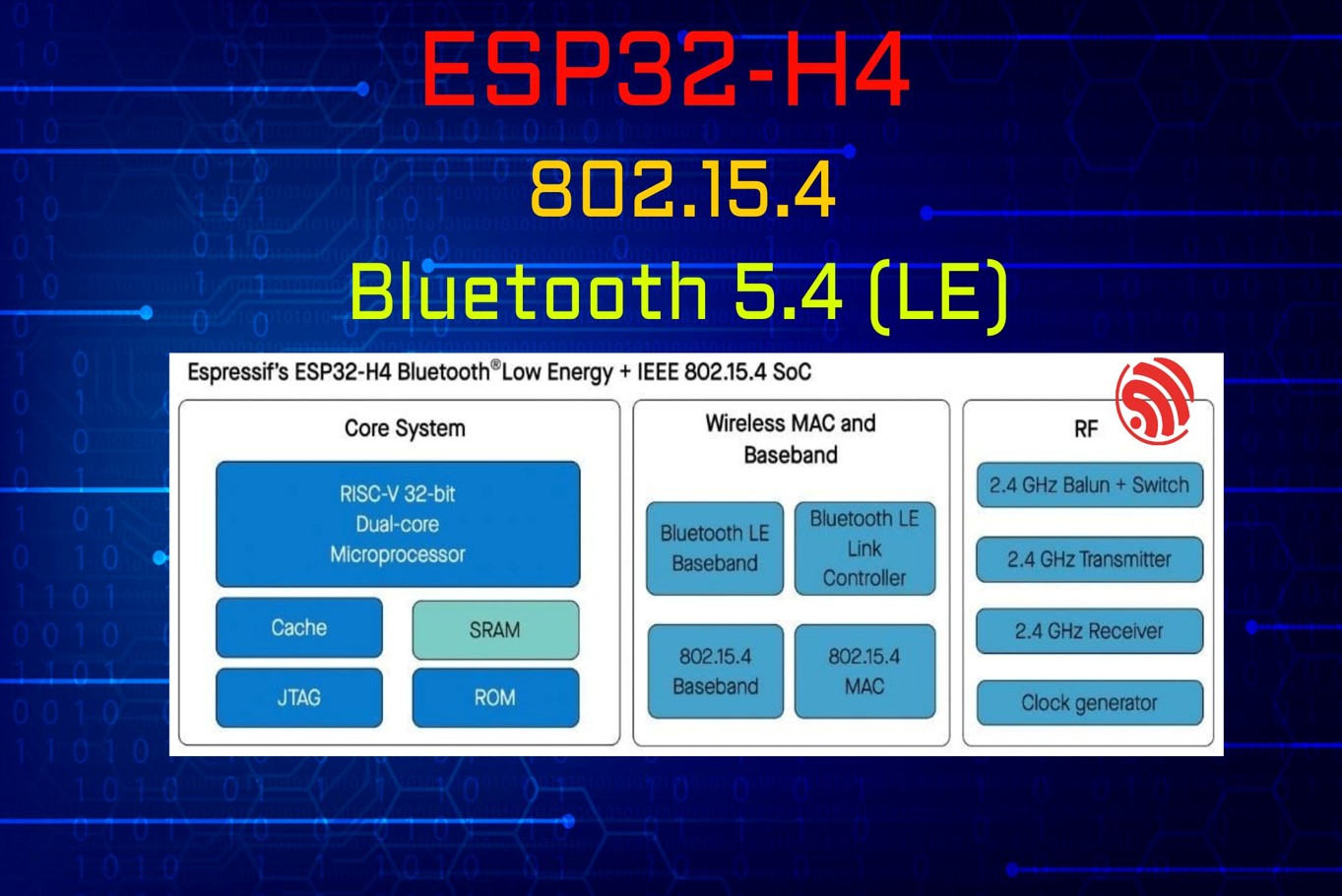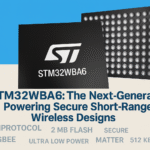Espressif Systems has recently unveiled its latest SoC, the ESP32-H4, marking a significant expansion in its array of 802.15.4 and Bluetooth LE offerings. This cutting-edge System-on-Chip (SoC) addresses the escalating demand for low-power wireless devices, showcasing substantial advancements in power efficiency, connectivity features, and memory expansion capacities.

The ESP32-H4 represents a notable leap forward for Espressif’s Bluetooth LE chips, transitioning from Bluetooth 5.0 to Bluetooth 5.4. This transition heralds enhanced connectivity capabilities, crucial for powering low-power mesh architectures, and supports protocols such as Thread 1.3, Zigbee 3.0, and Bluetooth Mesh 1.1. These protocols are foundational for the proliferation of IoT devices, enabling seamless communication and interoperability.
At the heart of the ESP32-H4 lies a dual-core, 32-bit RISC-V microcontroller, clocked up to 96 MHz. Bolstered by 320KB of on-chip SRAM, 128KB of ROM, and support for external flash memory, it offers robust computational power and memory management flexibility. Notably, the ESP32-H4 accommodates up to 4MB of PSRAM, enriching its memory capabilities for handling data-intensive tasks and applications.
Security remains paramount in the design of the ESP32-H4, with integrated features such as secure boot, flash encryption, and cryptographic accelerators safeguarding sensitive information and private keys. This ensures a fortified defense against potential cyber threats, vital in today’s interconnected digital landscape.
Efficient power management is another hallmark of the ESP32-H4, facilitated by its integrated DC-DC supply. Through efficient voltage regulation and selective activation of peripherals in low-power modes, the SoC optimizes power consumption, paving the way for extended battery life in battery-operated devices.
One noteworthy advancement introduced by the ESP32-H4 is its support for LE Audio, the next generation of Bluetooth audio technology. This enables audio streaming over Bluetooth Low Energy, unlocking a myriad of possibilities for audio-centric applications in wearables, smart home devices, and beyond. Additionally, features like LE Isochronous Channels, Connection Subrating, and Direction Finding enhance its versatility, catering to diverse application requirements.
The ESP32-H4’s integration of IEEE 802.15.4 and Bluetooth LE connectivity further broadens its utility, particularly in IoT deployments requiring extended battery life. Its compatibility with protocols like Matter over Thread positions it as an ideal solution for developing battery-powered IoT devices, spanning from smart sensors to sophisticated wearables.
In terms of peripherals, the ESP32-H4 offers up to 35 GPIOs, encompassing a range of standard microcontroller interfaces such as I2C, I2S, SPI, UART, and more. Specialized peripherals including touch-sensing GPIOs make it well-suited for applications demanding Human-Machine Interaction (HMI) capabilities.
Espressif’s commitment to developer support is evident through its IoT Development Framework (ESP-IDF), which empowers customers to leverage their existing knowledge and expertise. Additionally, the ESP-Matter-SDK will incorporate ESP32-H4 support, simplifying the development of battery-operated Matter-enabled products and fostering ecosystem growth.
One compelling application of the ESP32-H4 lies in the realm of smart retail solutions. Imagine a retail environment equipped with electronic shelf labels powered by ESP32-H4-enabled devices. These labels, leveraging the bidirectional advertising capabilities enabled by PAwR, can seamlessly communicate with a centralized control device, providing real-time updates on product pricing, availability, and promotions.
Meanwhile, thousands of ultra-low-power nodes scattered throughout the store ensure comprehensive coverage, enabling efficient inventory management and enhancing the overall shopping experience for customers.
The ESP32-H4 represents a significant milestone in Espressif’s journey towards advancing low-power wireless connectivity. With its potent combination of enhanced microcontroller capabilities, robust security features, and broad connectivity options, it is poised to catalyze innovation across a spectrum of IoT applications, driving the proliferation of smart, connected devices in diverse industries.
Author Profile
- 20+ years embedded hardware design professional with a burning passion for teaching. Sharing the intricate world of embedded hardware is my mission and joy.
Latest entries
 Tech Updates30 November 2025STM32WBA6: The Next-Generation MCU Powering Secure Short-Range Wireless Designs
Tech Updates30 November 2025STM32WBA6: The Next-Generation MCU Powering Secure Short-Range Wireless Designs Blogs24 November 2025High-Speed PCB Layout Design Guide-104
Blogs24 November 2025High-Speed PCB Layout Design Guide-104 Tech Updates14 September 2025Renesas Launches RL78/L23 Ultra-Low-Power MCUs to Power Smarter Home Appliances
Tech Updates14 September 2025Renesas Launches RL78/L23 Ultra-Low-Power MCUs to Power Smarter Home Appliances Blogs7 September 2025High-Speed PCB Layout Design Guide-103
Blogs7 September 2025High-Speed PCB Layout Design Guide-103











